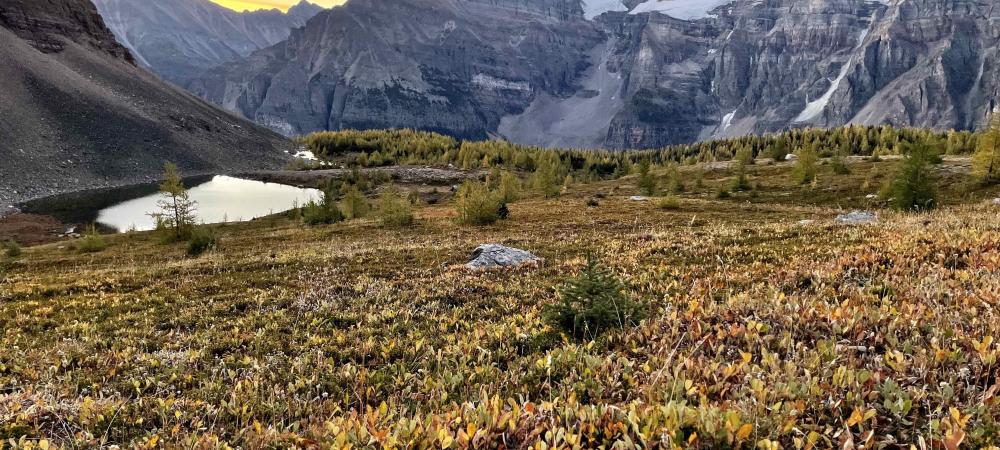
ACMG Mountain Conditions Summary for the Rockies and Columbia Mountains. September 16, 2021.
Typical autumn weather and conditions continue, with some blue skies this past week but snowy tops greeting us after a few brief storms. More of the same is on the way. You may be able to avoid the worst of it by going to southern and eastern zones.
WEATHER
Some cold and wet weather blew through the mountains on the weekend and again on Wednesday, giving us snowcapped peaks. It looks like more of the same over the weekend for all areas. Beyond that there will be some damp autumn weather coming at you if you plan to play north of Lake Louise and west of the Great Divide. South and east of Banff look better, after a wet weekend. Keep an eye on the forecasts to see if the timing or location of precipitation changes.
CONDITIONS
Winter is slowly creeping into the mountains. After almost clearing off by last weekend, the peaks are again white and I would expect snow above at least 2700 m in most areas.
There is not enough snow to fix the glaciers however. Expect difficult travel in crevassed terrain and wherever the ice had exposed rock and gravel on the surface earlier in the summer.
Some lower angled ice faces may be slowly coming into condition, where the recent snows have sloughed and are accumulating. Often the top exit is more cruxy in these conditions though.
Many hiking and lower elevation rock climbing objectives remain in excellent shape. The alpine meadows are in colourful glory, aspens are yellowing, and the larches are beginning to turn as well. The fall palette combined with icing sugar summits is making for spectacular scenery.
HAZARDS
I climbed Mt Temple on Tuesday, and although the snow was not deep there was evidence of wind slab. It made me think that on a smooth surface, such as an ice face or even a shale slope, that there would be the possibility to trigger a "tiddlywink" avalanche. Any wind slab right now would be small (a tiddlywink), but if it grabbed you in the wrong spot it could have serious consequences. The most serious incident I have been involved in was this scenario. I was shortroping on the lower ice tongue on Mt Aberdeen after an early September storm. I popped a slab the size of a dinner table, with just enough mass to push me over backwards in slow motion. My crampon caught in the ice and I broke my leg. If it had been a cliff below me I would not be here to tell the story.
Other hazards are the same as I mentioned last week, but are worth listing again:
- Days are short, nights are long, and temperatures are cold. Bring headlamps and extra clothes.
- Cornices are starting to form on the highest ridges.
- Rocks will fall when fresh snow starts melting or when it begins to rain.
- Crevasses are poorly bridged and may be hidden, either by snow that has rotted all summer or by the recent snowfalls.
- Snow may also make route finding harder if trails, landmarks, and markings are covered. Trails are also slippery with snow on them.
OBJECTIVES
This week I would be headed for:
- low elevation rock climbs
- simple glacier climbs
- considering routes with shorter, low angled ice faces if they look white and not grey
- lower elevation scrambles
- aspen and treeline hikes for the colours
I am avoiding:
- alpine rock
- complex glaciers
- steeper, longer ice faces that don't look refreshed
Lastly, we can't ignore the fact that our hospitals are under strain right now. Play it safe and try to avoid an accident that would add more stress to the health care system.
Even with poor weather and snow, there is plenty to do if you let the mountains guide your decisions. Enjoy the change in seasons and be satisfied with mellower objectives if that is what they are allowing you to do.
Mark Klassen
Mountain Guide